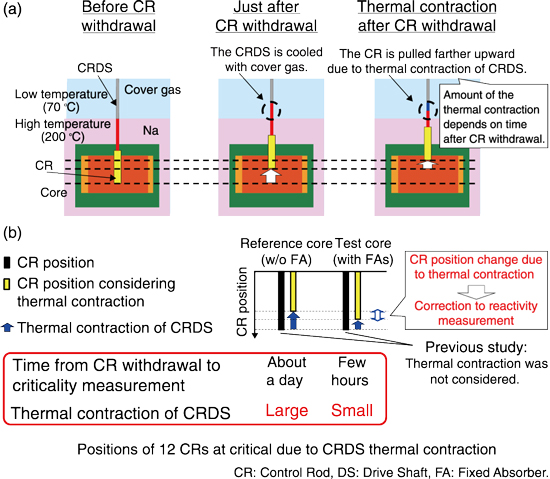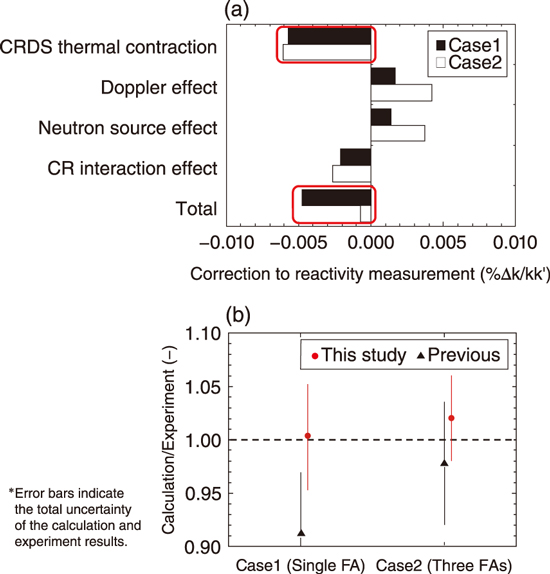
Fig.7-14 (a) Mechanism of CRDS thermal contraction and (b) its impact on reactivity measurement

Fig.7-15 (a) Corrections to reactivity measurements and (b) comparison of calculations and experiments
The JAEA has been intensively evaluating core physics experiments conducted in the Prototype Fast Reactor Monju to utilize them for validating the neutronics calculation methodology for fast reactor designs.
Sometimes, an unexplainable discrepancy is found between the experiment and calculation results. For instance, a discrepancy was observed in the reactivity measurement of fixed absorbers (FAs), a subassembly to control reactivity like control rods (CRs) but used in the reactor start-up. In two series of experiments conducted by loading a single FA (Case1) and three FAs (Case2), a discrepancy between the experiment and calculation results beyond the total uncertainty of both was only observed in Case1.
The FA reactivity was measured from the difference between the critical CR positions of the cores before and after loading FAs (the reference and test cores). An examination of the data collection and evaluation processes indicated that changes in the CR positions due to thermal contraction of CR drive shaft (DS) were responsible for the unexplainable discrepancy. After a CR is withdrawn, it is pulled farther upward without operating the CR because a portion of a CRDS of the withdrawn CR gradually contracts due to a fall in temperature caused by movement from sodium coolant at 200 ℃ toward cover gas above the sodium at around 70 ℃ as indicated in Fig.7-14. The change in CR position is slight (smaller than 1 mm), but the change is observed in 13 CRs in the core and depends on time after CR withdrawal.
In Case1, the FA reactivity was measured by using the CR at the core center (C1) while keeping the other 12 CRs unchanged between the reference and test cores. A detailed examination revealed that the operational histories of the 12 CRs differed depending on the cores. The critical CR position was measured approximately one day after withdrawing the CRs to the critical CR positions in the reference core, while the measurement was performed after only few hours in the test core. The resulting difference in the CRDS thermal contraction causes a clear influence on the reactivity. By correcting the reactivity attributed to the changes in the CR position in both cores, the discrepancy between the calculation and experiment results disappeared successfully, as shown in Fig.7-15. For Case2, there is no large difference between the previous study and this study since the correction factors, including the CRDS thermal contraction effect, were canceled out.
The present study successfully eliminated the discrepancy between the calculation and experiment, and the experimental data became acceptable as validation data. The finding in this study was also applied to evaluation of other experiments, such as a fuel reactivity worth measurement, to enhance their reliability. The JAEA continues to reevaluate other experiments to develop a high-quality validation database for fast reactor neutronics designs.
(Kazuya Ohgama)